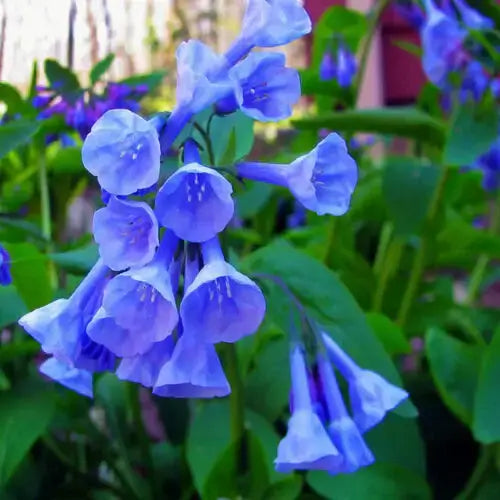The Virginia Bluebell is a Woodland Perennial That Thrives in Partial Shade
Virginia Bluebell — Mertensia virginica— is native to the woodlands of the northeastern portion of North America. As a member of the Borage family, Virginia Bluebells bring the same true-blue color palette to the picture as their Forget-Me-Not cousins. Bumblebees are often seen as a favorite of pollinators. Bumblebees often buzz around this flower soon after it first appears in early spring; butterflies and moths soon follow them.
Their long bloom period makes them highly prized by those seeking color for naturalized gardens and woodland areas.
At the height of between one and two feet for mature plants, you can also use them for a casual cottage garden look under shade trees and along the northern sides of homes and other structures. Virginia Bluebells go dormant by mid-summer, making way for later-blooming perennials to put on their annual show.
<
The Virginia Bluebell Naturalizes Into Spectacular Colonies
Virginia Bluebells ramble and roam through forest glades and meadows in their natural habitat, providing spring color under deciduous trees that haven't yet fully leafed out. The Virginia Bluebell is a social plant that loves its company more than anything else.
While it doesn't perform informal garden situations as a specimen plant, it excels when planted in typical woodland soils and allowed to naturalize. This plant prefers moist, well-drained soils with plenty of organic matter. Once established, it is very low-maintenance, making it an ideal candidate for lining creeks and for using near informal water features such as fountains, ponds, and waterfalls. It can also thrive when planted near or around Black Walnut trees, and unlike many woodland perennials, Virginia Bluebells are rabbit-resistant.
It can also be used as a rock-garden plant, but it's essential to overplant the area with quick-growing, blooming annuals that will take over once the bluebells have died back to the ground.
Many homeowners include them in shade gardens with hostas and ferns — this provides a remarkably serene ambiance when a quietly bubbling fountain is added to the mix and a comfortable seating area to create a peaceful outdoor reading nook. Because hostas and ferns tend to expand as the growing season progresses, they'll cover any holes left by Virginia Bluebells once their bloom season has passed. They revert to dormancy until the following spring.
The Virginia Bluebell has bell-shaped flowers that form terminal clusters.
The colors range from blue-lavender to sky blue on arching stems above the plant's large, oval, greenish leaves. It is recommended for USDA hardiness zones 3-8.

